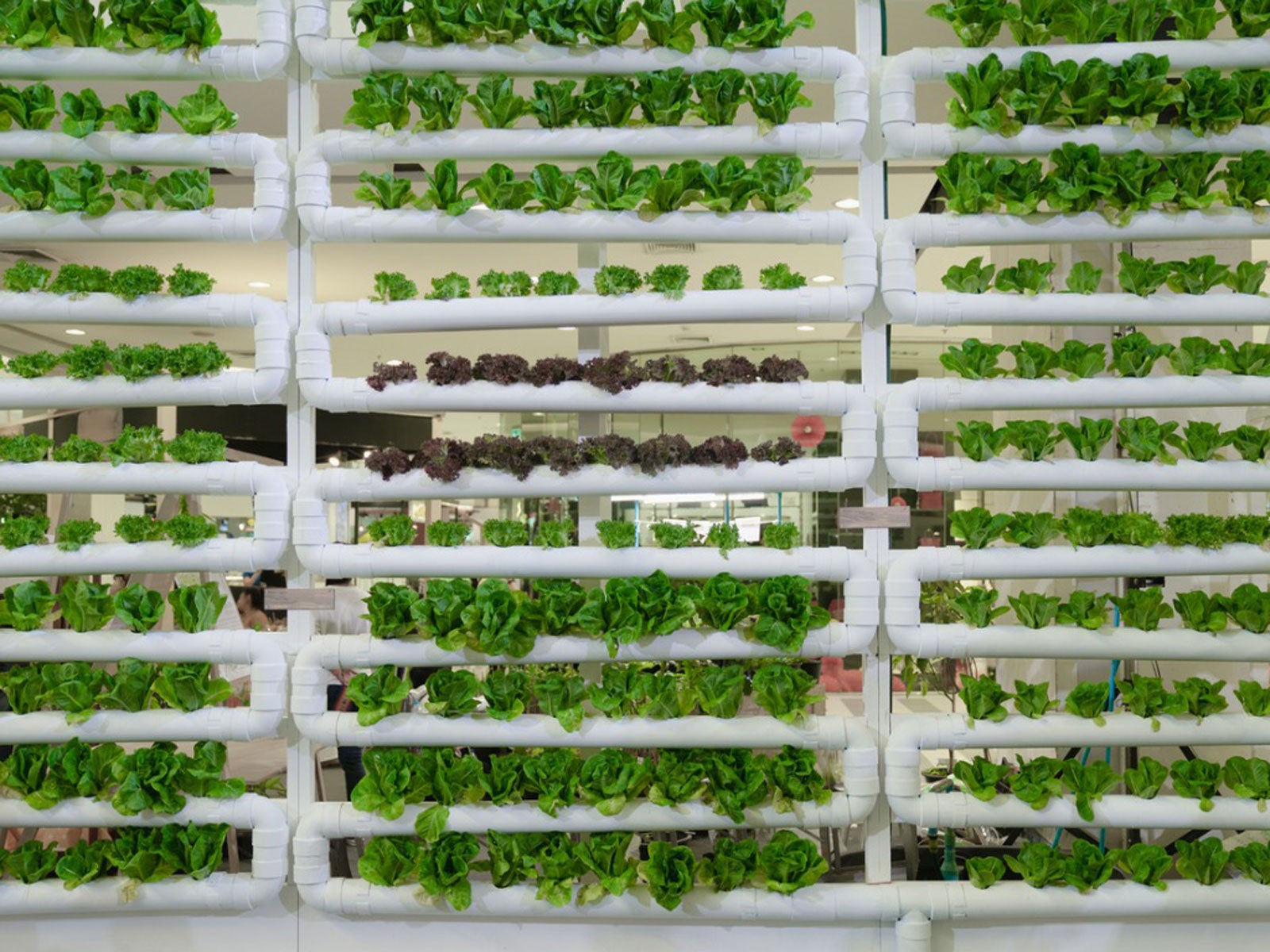Vertical Farming How To: Starting A Vertical Farm In Your House


Starting a vertical farm at home can provide your family with fresh veggies year-round and with a little ingenuity, you could even turn vertical farming at home into a profitable business. Exactly what are vertical farms? It is basically indoor farming using a system of racks, towers, or shelves to stack plants vertically.
Vertical Farming How To
The beauty of vertical gardening at home is it takes up very little space. A closet, a corner of the kitchen, or an unfinished basement might be the perfect spot for starting a vertical farm. You will need the ability to control temperature and humidity as well as provide artificial light, water, and fertilizer.
Before starting a vertical farm, you will need to acquire some equipment. A wire-rack shelving unit with grow lights is one possibility. Tower gardens, built from PVC pipe, are another popular choice. If you have a sunny kitchen, mounting a hydroponic jar garden on a south-facing wall could provide your family with a steady supply of lettuce, herbs, and greens.
The type of equipment selected for vertical gardening at home can also dictate whether you plant in soil, a soilless medium, or use a hydroponic system. Any of these methods can produce healthy, fresh vegetables. Soilless mediums and hydroponics are usually freer from soil-borne parasites and diseases, but pests and pathogens can be introduced into these systems and quickly overtake the plants.
Vertical Farming Ideas
What can you grow in a vertical farm? Basically, any vegetable you can grow in your garden can be used for vertical gardening at home. Fast maturing, leafy greens are good crops to try when starting a vertical farm. These include:
As you gain experience, experiment with vertically farmed tomatoes, peppers, or woody herbs like rosemary. These vegetables take longer to go from seed to harvest but often warrant a higher price at market.
If your goal is to sell vertical garden produce for a profit, consider these additional vertical farming how-to tips:
Gardening tips, videos, info and more delivered right to your inbox!
Sign up for the Gardening Know How newsletter today and receive a free copy of our e-book "How to Grow Delicious Tomatoes".
- Profit potential – Choose a crop based on its marketability in your area. Does the upscale restaurant down the block need a steady supply of microgreens or is your plan to grow fresh strawberries year-round for the local grocery store?
- Fast turn vs. slow turn crops – Microgreens can take less than a month to mature, while crops like tomatoes and peppers can take two to three months to put out their first fruit. How soon you are looking to get a return on your investment of time and money can influence your choice of crops.
- Start slow – The type of equipment used in vertical farming can vary according to the crop. Before investing your entire savings in a snap pea set-up, for instance, trial this crop for operational costs, yields, and selling price.
- Diversify – Don't put all your eggs in one basket or fill your vertical farm with only one type of crop. Growing a variety of vegetables or herbs can provide a steadier cash flow and protect against total loss if one crop fails.

Laura Miller has been gardening all her life. Holding a degree in Biology, Nutrition, and Agriculture, Laura's area of expertise is vegetables, herbs, and all things edible. She lives in Ohio.
-
 Looking For Plants To Give You The Soft And Fuzzies? Try These 5 Fuzzy Leaf Plant Options
Looking For Plants To Give You The Soft And Fuzzies? Try These 5 Fuzzy Leaf Plant OptionsLovers of texture, drama, silver foliage and tactile plants will adore these special sensory garden additions. These fuzzy leaf plant options will leave you all aglow
By Susan Albert
-
 Get Ready For A Summer Of Hummers! Grow These Full Sun Hummingbird Plants and Flowers
Get Ready For A Summer Of Hummers! Grow These Full Sun Hummingbird Plants and FlowersIf you’re lucky enough to enjoy a sunny backyard, make sure you are maxing out on your pollinator opportunities and grow these full sun hummingbird plants and flowers
By Tonya Barnett